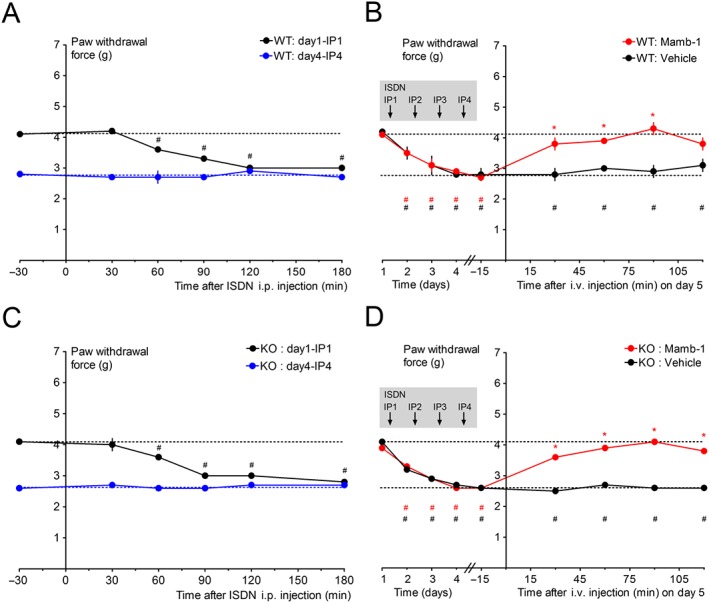Figure 6.

Reversal of ISDN‐induced maximal extra‐cephalic chronic mechanical allodynia by an i.v. injection of mambalgin‐1 in wild‐type and ASIC1a knockout (KO) mice. (A, C) Kinetics of the effects of the first ISDN injection on day 1 and of the fourth ISDN injection on day 4 on hindpaw mechanical withdrawal threshold (g) of wild‐type (A, n = 20) and ASIC1a‐KO (C, n = 17) mice. Mean ± SEM, # P < 0.05 with Wilcoxon matched paired test compared to control value before the ISDN injection, all non‐significant for day 4 data. (B, D) Kinetics of the anti‐allodynic effect of Mamb‐1 (13.6 nmol·kg−1) and vehicle i.v. injected 1 day after the last ISDN injection (i.e. on day 5) on paw mechanical withdrawal force (g) of wild‐type (B, n = 10) and ASIC1a‐KO (D, n = 8–9) mice. The basal mechanical withdrawal force (g) was measured before each daily ISDN injection (left side of the Y axis, which includes the values at −30 min for day 1 and 4 in A and C), showing the chronification process of cutaneous allodynia day after day. Mean ± SEM, n = 8–10. *P < 0.05 with Mann–Whitney non‐parametric test compared to vehicle; # P < 0.05 with Wilcoxon matched paired test compared to control value before the first ISDN injection (day 1). Groups of mice used in A and C were then divided in half to be injected with either vehicle or Mamb‐1, as shown in B and D.
